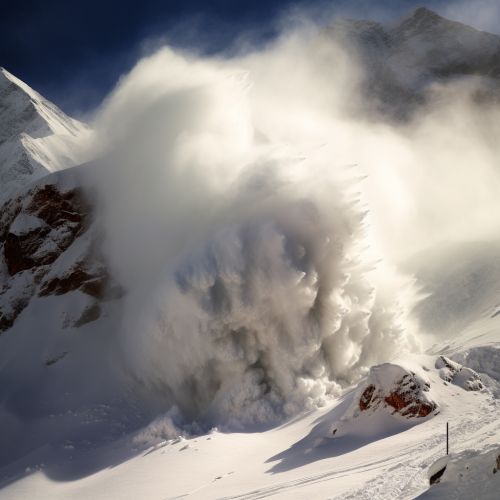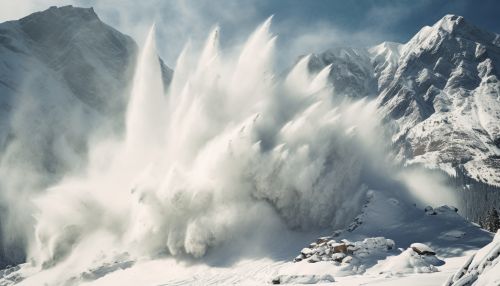The Science of Avalanche Prediction and Control
Introduction
Avalanches, a rapid flow of snow down a hill or mountainside, pose a significant threat to life and property in mountainous regions. The science of avalanche prediction and control is a specialized field of study within the broader discipline of snow science. It involves understanding the complex interplay of meteorological, physical, and geological factors that contribute to avalanche formation and release. This article delves into the intricacies of this field, exploring the principles, methodologies, and technologies used in predicting and controlling avalanches.
Formation of Avalanches
Avalanches occur when a layer of snow becomes unstable and slides down a slope. This instability can be caused by a variety of factors, including the type and condition of the snow, the slope angle, the terrain, and the weather. The process of avalanche formation can be divided into four main stages: accumulation, weak layer formation, slab formation, and trigger.
Accumulation
The first stage in the formation of an avalanche is the accumulation of snow on a slope. This is influenced by factors such as snowfall rate, wind direction and speed, and temperature. The snowpack's structure can vary greatly depending on these factors, leading to different types of avalanches.
Weak Layer Formation
The formation of a weak layer in the snowpack is a critical factor in avalanche formation. This can occur due to various processes such as surface hoar growth, depth hoar formation, or the deposition of low-density snow on a high-density layer. Understanding the formation of these weak layers is crucial in predicting avalanches.
Slab Formation
Over time, additional layers of snow accumulate on top of the weak layer, forming a slab. The characteristics of the slab, including its thickness, density, and cohesion, can significantly influence the likelihood of an avalanche.
Trigger
The final stage in the formation of an avalanche is the trigger. This can be a natural event, such as a snowfall or wind, or a human activity, such as skiing or snowmobiling. The trigger causes the slab to fracture and slide down the slope, resulting in an avalanche.


Avalanche Prediction
Predicting avalanches involves assessing the stability of the snowpack and the likelihood of a trigger. This is done through a combination of field observations, weather forecasts, and snowpack modeling.
Field Observations
Field observations are a critical component of avalanche prediction. These include visual observations of the snowpack and the surrounding terrain, as well as physical measurements of the snowpack, such as its depth, density, temperature, and structure.
Weather Forecasts
Weather forecasts are used to predict changes in the snowpack that could lead to avalanche formation. Factors such as temperature, precipitation, and wind can significantly affect the stability of the snowpack.
Snowpack Modeling
Snowpack models are computer simulations that predict the evolution of the snowpack over time. These models incorporate meteorological data and physical laws to simulate processes such as snow accumulation, metamorphism, and melt.
Avalanche Control
Avalanche control involves measures to reduce the risk of avalanches. These can be preventive measures, aimed at preventing the formation of avalanches, or reactive measures, aimed at mitigating the impact of avalanches.
Preventive Measures
Preventive measures include snowpack management, such as the use of snow fences and snow grooming, and the modification of the terrain, such as the construction of avalanche breakers and deflection walls.
Reactive Measures
Reactive measures include the use of explosives to trigger controlled avalanches, the construction of protective structures, such as avalanche dams and shelters, and the implementation of emergency response plans.
Conclusion
The science of avalanche prediction and control is a complex and multifaceted field. It requires a deep understanding of the physical processes involved in avalanche formation, as well as the ability to integrate this knowledge with meteorological data and field observations. Despite the challenges, advances in technology and research are continually improving our ability to predict and control avalanches, helping to protect lives and property in mountainous regions.
